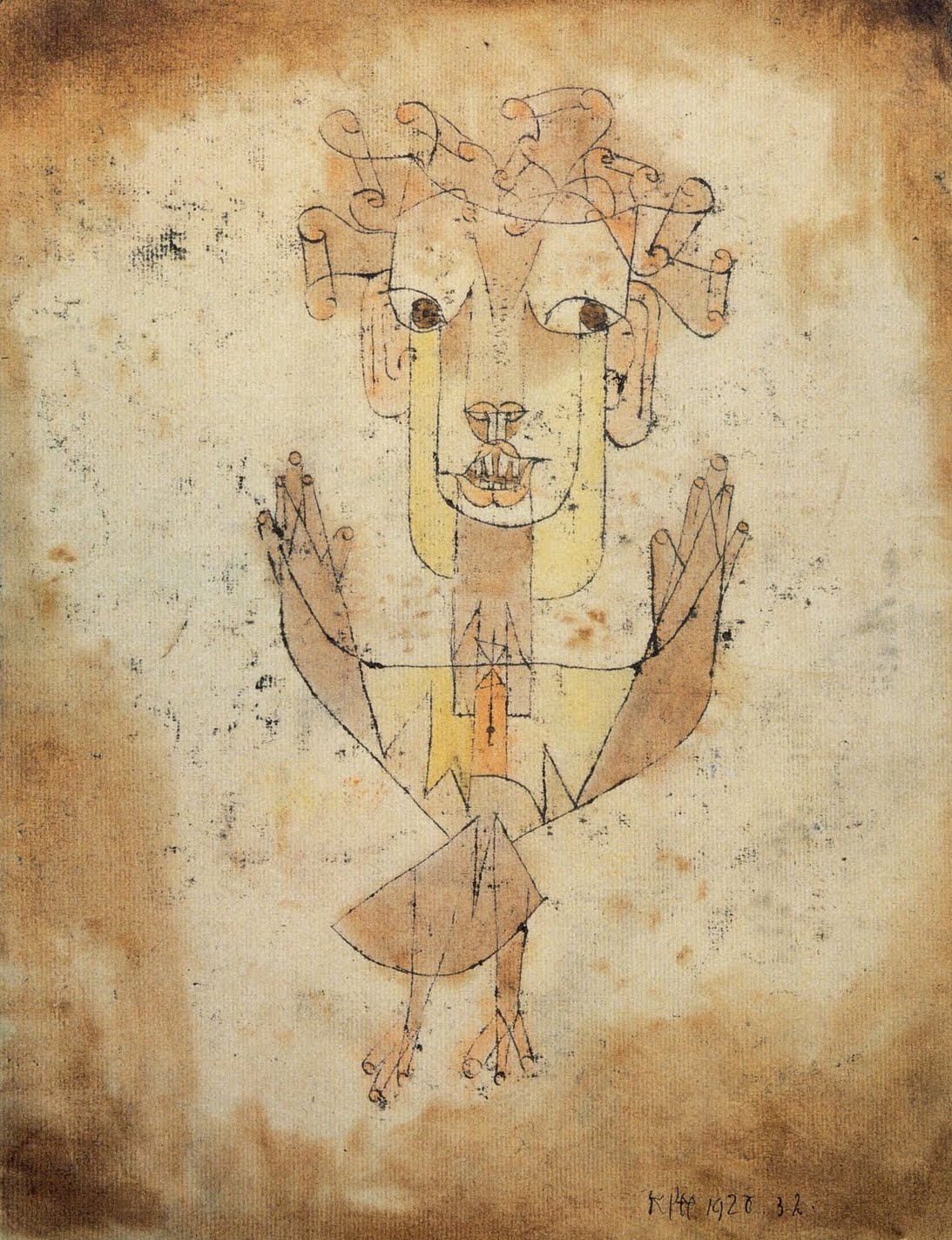Revolution or Reformation? The Potential of Palimpsest Conference
About the Conference
Annie Bourneuf’s recent book, Behind the Angel of History: The Angelus Novus and Its Interleaf (2022), documents how American artist R.H. Quaytman carefully unearthed a nineteenth-century print of the German Reformer Martin Luther on which the artist Paul Klee had superimposed his image of the angelus novus in 1920. The philosopher Walter Benjamin owned this print, making it famous in a letter exchange he had with Gershom Scholem. The angelus novus is a palimpsest, documenting distinct historical layers by a technique of concealing and revealing them. Benjamin’s reflections on this image further reveal how palimpsest became significant in his own understanding of “catastrophe,” as Benjamin formulated his understanding of historical rupture during Nazi Germany.
Bourneuf’s book on Quaytman’s discovery provides an exciting opportunity for an interdisciplinary consideration of palimpsest, and how the ruptures identified by the superimposed layers orient crisis to an “otherwise.” We are currently in a moment of crisis, indeed of many crises. The climate crisis, which is posing the most drastic threat to human and planetary life, and current wars in the Middle East and Europe/Asia, can be seen analogously to crises in the past that too, although in different ways, resulted in world-changing upheavals. Klee’s own angelus novus is a palimpsest hinting at different layers of crisis—the Protestant Reformation, World War I, and 1920 Weimar Germany that was a prelude to yet another crisis, Nazi Germany’s aspirations of world domination that included the enslavement of peoples, and the murder of homosexuals, Sinti and Roma, persons with disabilities, political dissidents, and six million Jews.
This conference’s aim is to explore the transformative implications of palimpsest using Klee’s angelus novus as focal point. Benjamin’s idea of “layers of history” inspires the question concerning the reformatory or revolutionary potential of the ruptures inscribed by palimpsest. How is crisis mapped by palimpsest, which, as a cultural technique, is marked by or born from a moment of crisis? How are ruptures created and what do they document? How do they orient to an “otherwise,” such as a new political era, hope, or even the transcendent?
The conference explores the ways in which palimpsest can be understood as productive for ideas about and action in our contemporary moment of crisis, or “polycrisis.” Palimpsest will be creatively interrogated from interdisciplinary perspective, with scholars in art history, religious studies, philosophy, anthropology, literature, and Black studies addressing the crisis conditions under which palimpsest is produced and recognized, and how palimpsest discloses places of rupture that open to possibilities that orient ethical, affective, religious, and political attitudes and activity.
Conference Speakers
Featuring Annie Bourneuf (School of the Art Institute of Chicago); Mark Haxthausen (Williams College); Jacqueline Mariña (Purdue University); Isabel von Holt (Hamburg University); Michael Puett (Harvard University); Jason Springs (Notre Dame University); Christopher Wild (University of Chicago); Robert Orsi (Northwestern University); Christine Helmer (Northwestern University). Read more about the speakers here.
Schedule of Events
The conference will run May 22-24, 2024. Events will be held in 555 Clark Street, Kresge Centennial Hall, and University Hall. See the full schedule of events here.

